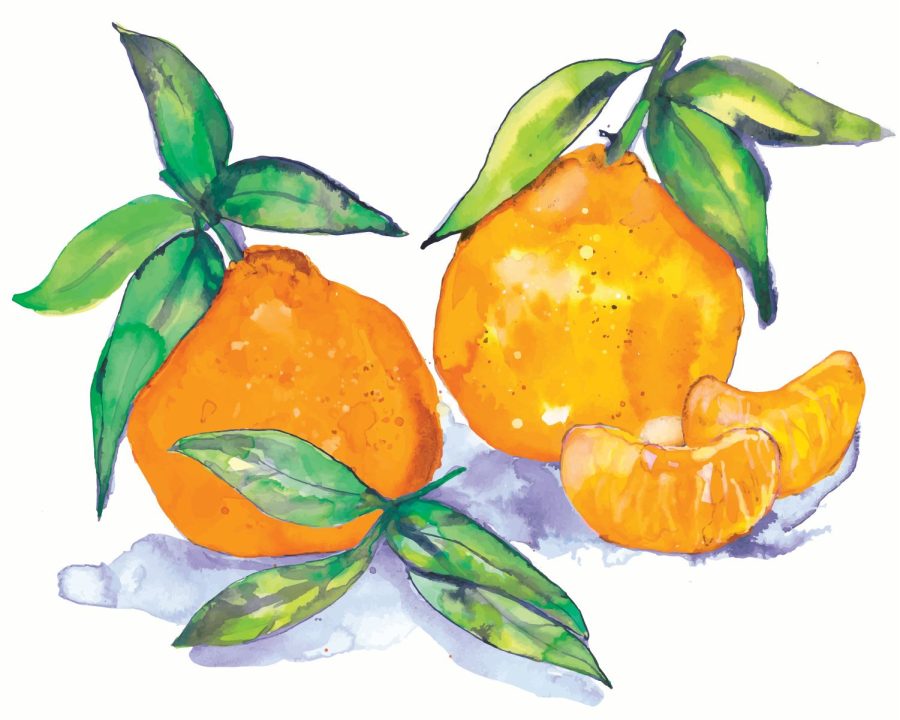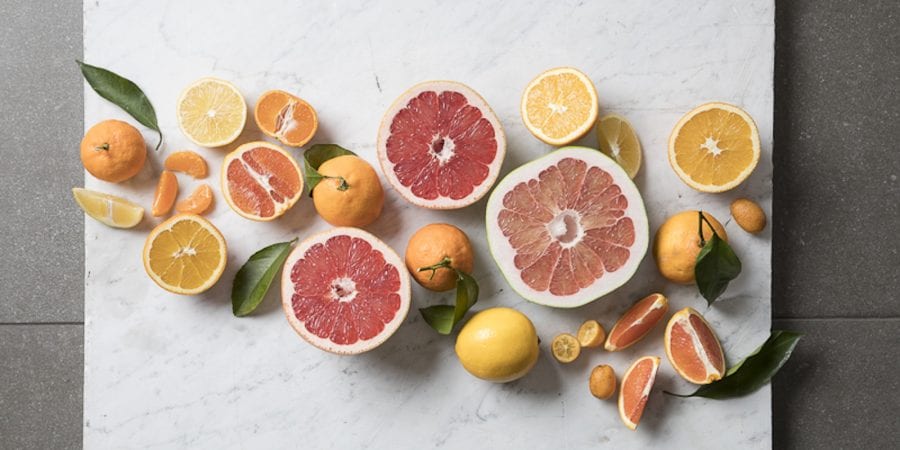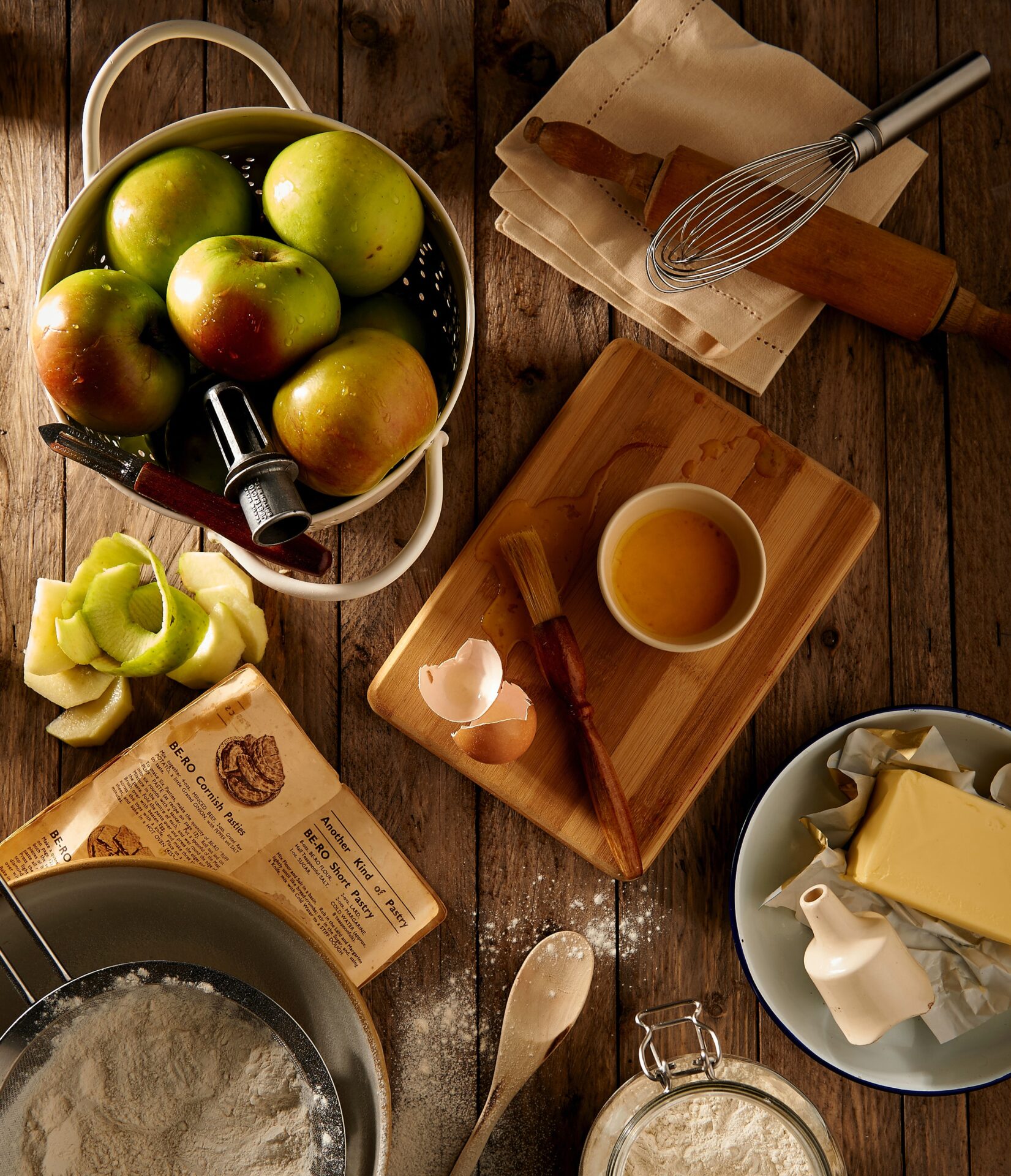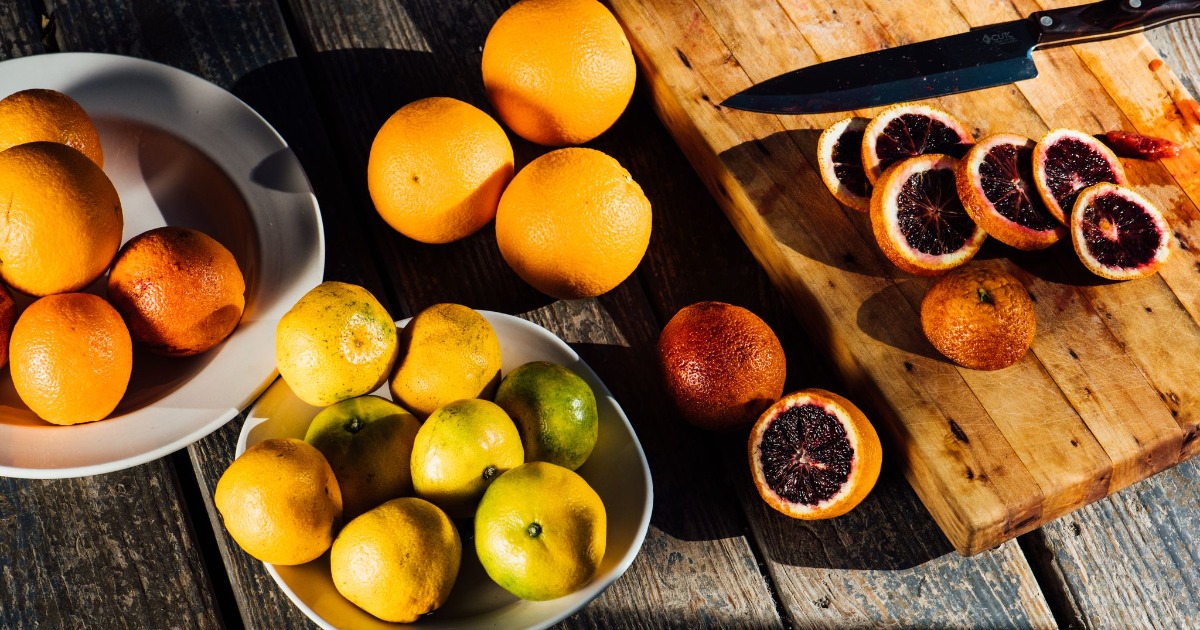Contrary to their color, citruses bloom and blossom well before the warm-weather season that they conjure. Most often, lemons are hailed for their acid and flavor, both of which cut richness, tenderize meat, and alter the texture of food. However, other winter citruses in the same line, such as orange, grapefruit, and satsuma, get the job done while also adding a unique flavor profile.
Husband-and-wife duo Nick Reppond and Angie Sicurezza at GRIT in Taylor, Mississippi, say you can’t go wrong incorporating winter fruits into savory dishes. They turn to satsumas from Louisiana, oranges from Florida, and grapefruits from Texas to add seasonal acidity to the menu at their local-meets-international eatery. Here’s how.

Lighten Up with Citrus
Heavy, warm, and wintry dishes are a go-to in colder months. Citrus is safe on salads or paired alongside braised beets, but Reppond often finishes meatier plates with squeezes or zests of citrus to lighten up the taste or to relieve some of the wild flavors of braised lamb or salmon.
Save Up
The team at GRIT takes whole pieces of fruit—lemon, satsuma, grapefruit—and packs them in salt at room temperature for about four weeks to preserve them. They’re then perfectly pungent to use as a garnish or in a marmalade, and the peels work well in holiday fruit cakes. Save extra zest and combine with equal parts salt and sugar mixture, let sit for 24 hours, rinse, and serve over a well-dressed bagel.
Switch Up Your Citrus
Lemon is the leading citrus for both its availability and pH, but Reppond encourages you to get out of your citrus comfort zone. Experiment with new flavor profiles and different degrees of bitterness and sweetness: Grapefruit zest doesn’t often appear in recipes, but with an abundance of winter citrus in the South, it’s perfect to shake up your repertoire.

A Savory Recipe for Winter Citrus
GRIT’s winter citrus and olive-braised chicken thighs fly off the menu. The one-pan recipe hones time, spice, and citrus. Take 6 semi-boneless chicken thighs and pat dry before seasoning with salt and pepper. Heat ½ cup olive oil in a heavy-bottomed braising pan on medium-high and place thighs skin-side down. Lower heat to medium and cook until golden brown. Flip thighs and cook for 2 to 3 minutes, then transfer to a plate.
Add 1 cinnamon stick, 1 teaspoon coriander, 1 teaspoon cardamom, ⅛ teaspoon ground cloves, and 3 star anise pods to pan and toast before adding 2 cups diced onion, 2 tablespoons sliced garlic, 1 cup diced carrots, and ½ cup thinly sliced fennel. Sauté until onions are translucent, then stir in 1 cup canned diced tomatoes, ½ cup pitted and sliced Castelvetrano olives, ½ cup pitted and sliced kalamata olives, and ½ cup white wine.
Add juice and zest of 2 oranges, 1 cup dried apricots (soaked in warm water for 1 hour), ½ cup chicken stock, and 3 bay leaves.
Return chicken thighs to pan and arrange 1 cup grapefruit supremes, 1 cup satsuma mandarin supremes, and several small clusters of grapes on top of the chicken. Roast at 375 degrees for 12 to 15 minutes, then top with ½ cup rough chopped parsley.
share
trending content
-
Culling a Wild Boar Population | Listen
-
Get to Know Oxford, Mississippi | Listen
by Lia Picard -
Warm Weather Getaways: South for Winter | Listen
by Erin Byers Murray -
Get to Know Charlottesville, Virginia | Listen
by Stephanie Ganz -
Walking Up an Appetite with Culinary Tours | Listen
More From Key Ingredient
-
Little Bursts of Summertime
-
A Better Butter Bean
-
Key Ingredient: Preserved Lemons
-
Key Ingredient: How Do You N’duja?
-
In Season: Persimmons






